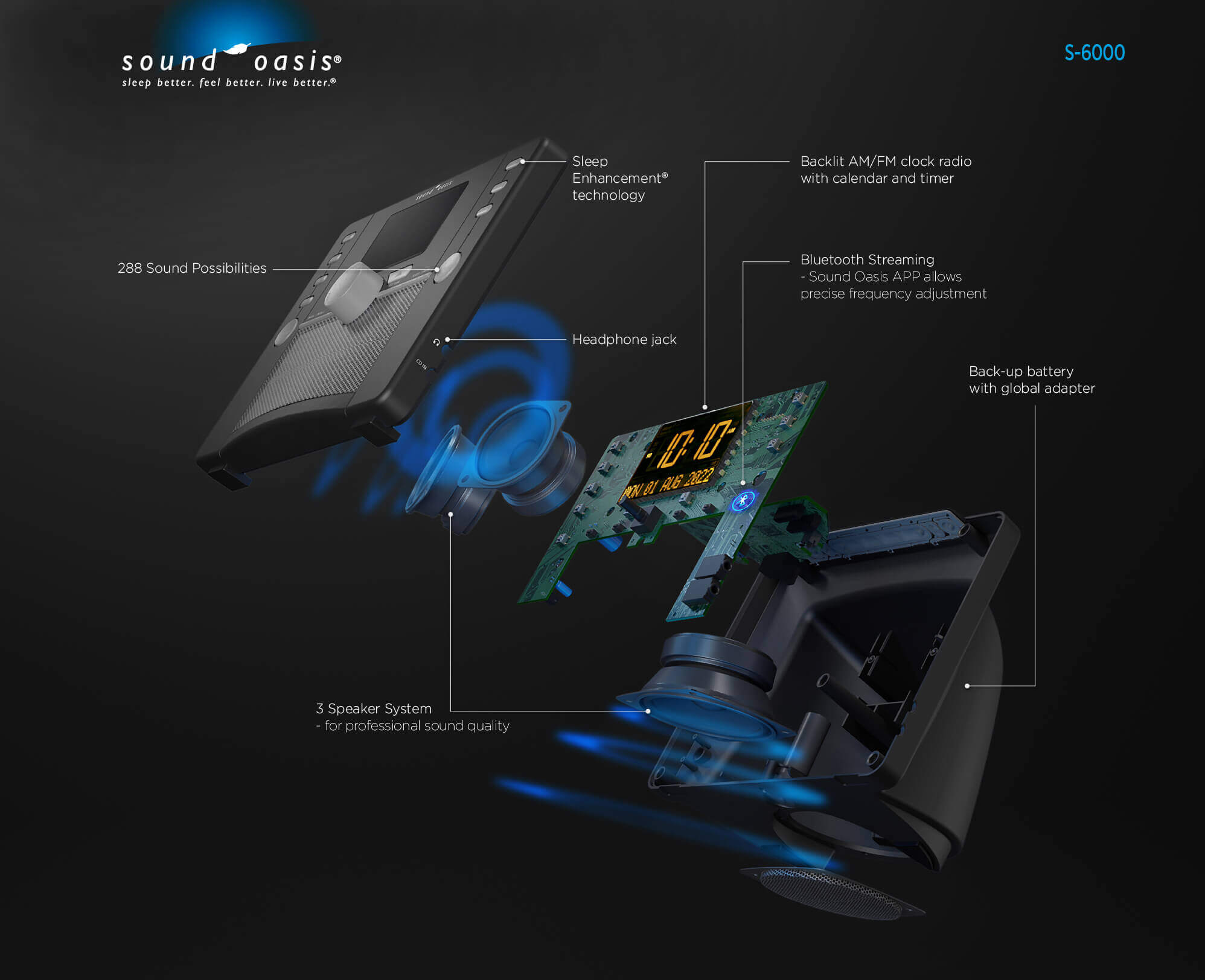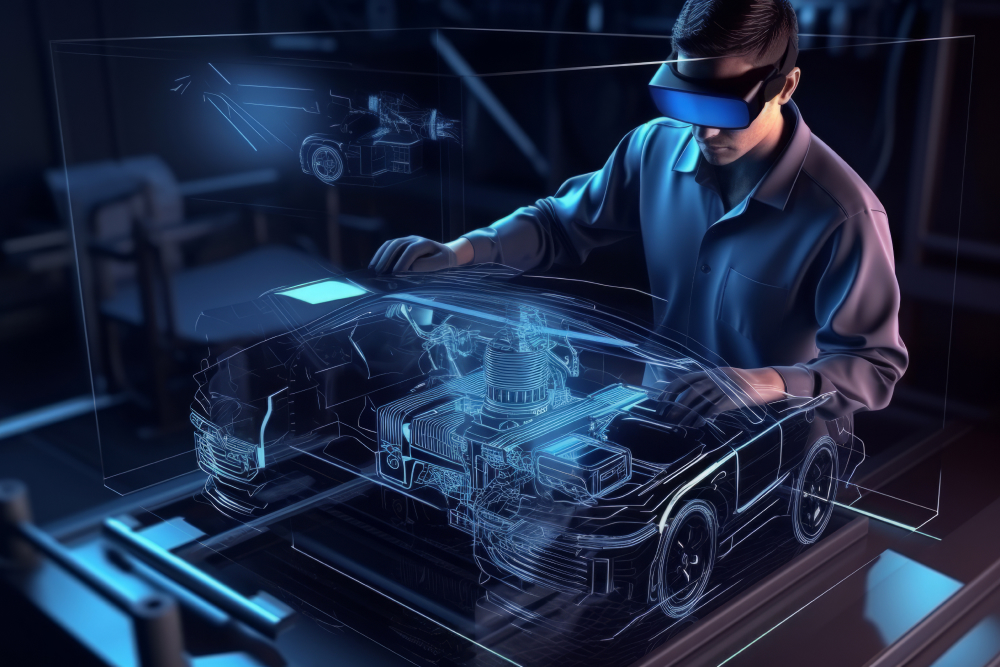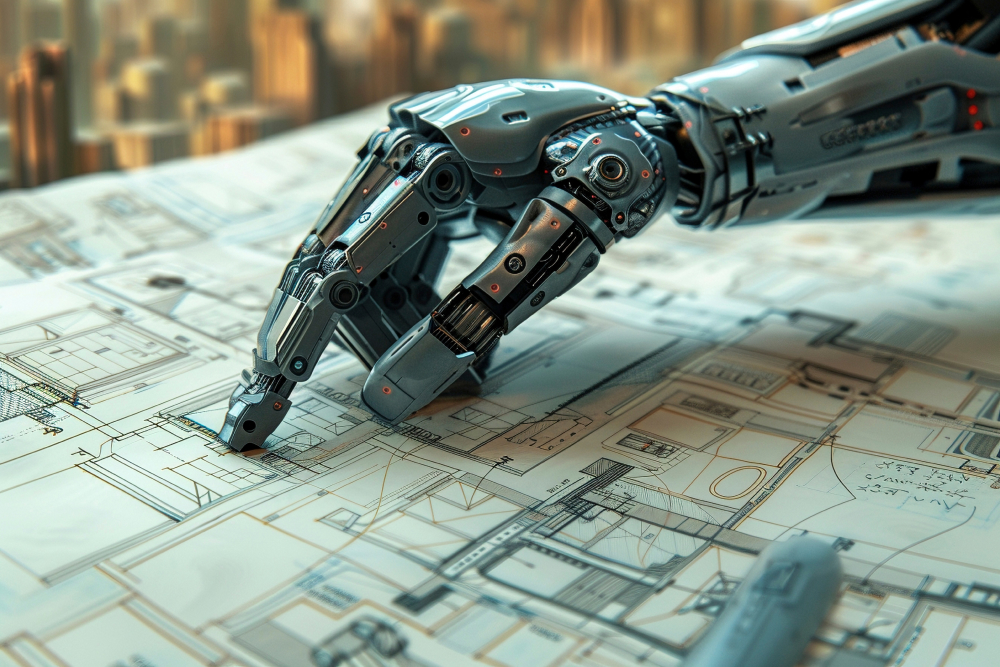Mechanical design is a part of product development process critical facet of engineering that encompasses the development, construction, and optimization of mechanical systems and components.
Rooted in engineering yet flourishing in creativity, mechanical design is a domain where technical rigor meets imaginative thinking, with industrial designers and engineers sculpting the future with every sketch and prototype. These creators are modern-day engineers, applying their extensive expertise in materials science, physics, and production techniques to develop innovative solutions, enhance existing technologies, and bring unprecedented concepts to life. Industrial design and mechanical design are intricately connected, often collaborating to create functional, aesthetically pleasing, and user-friendly products. While industrial design focuses on the product’s overall look, feel, and user experience, emphasizing aesthetics, ergonomics, and usability, mechanical design zeros in on the technical and engineering aspects. Mechanical design ensures robust internal mechanisms, structures, and systems that make the product operate effectively and safely.
Together, industrial designers and mechanical engineers work closely during the product development process. Industrial designers might initiate the concept or sketch, defining the product’s form and function, which mechanical engineers then develop into workable mechanical systems and components. In prototyping, industrial design emphasizes visual and tactile qualities, whereas mechanical design prioritizes functionality and durability under real-world conditions.

Contents
What are the basics of mechanical design?
This is a blend of creativity, physics, materials science, and manufacturing processes. It’s about turning conceptual ideas and requirements into tangible, functional, and innovative products that can be produced at scale.
1. Integrated Design Approach: Mechanical design involves the application of principles of mechanics to create functional and efficient designs. This includes knowledge of concepts such as force, torque, motion, and stress. In the realm of IoT hardware, a seamless integration of mechanical, electronic, and software components is crucial. Mechanical design in this context requires a holistic view that considers how physical components accommodate and protect electronic parts, ensuring efficient communication between devices. Collaboration between different engineering teams becomes a key principle to streamline this integration process.

For example, AJProTech’s work on wearable technology demonstrates an integrated design approach where the mechanical design not only provides the ergonomic and aesthetic aspects required for consumer acceptance but also addresses the need for housing delicate electronics securely, managing heat dissipation, and ensuring robustness for daily use.
2. Knowledge of Materials: The materials used in the design of an IoT product are critical to its functionality and longevity. Mechanical engineers must carefully select materials that are suitable for the intended use, taking into account factors such as strength, durability, and cost. Engineers must have a good understanding of the physical properties, behavior, and limitations of various materials. Our team has extensive knowledge of materials and can help you select the best options for your product.
3. CAD Software: Computer-Aided Design (CAD) software is essential for mechanical design as it allows engineers to create detailed 2D and 3D models of their designs, analyze their performance, and make necessary modifications.
4. Design for Manufacturability (DFM): Mechanical designs must be optimized for efficient and cost-effective manufacturing processes. This involves considering factors such as materials, production techniques, and manufacturing tolerances. When it comes to IoT Product Development, mechanical engineers must have a deep understanding of DFM. At AJProTech, we have a team of experienced engineers who are well-versed in DFM principles and can ensure that your product is designed for manufacturability.
5. Ergonomics and Human Factors: Mechanical designs need to be user-friendly and take into account human factors such as ergonomics, compactness, safety, and accessibility.
The demand for compact, energy-efficient IoT devices necessitates mechanical designs that optimize space usage and minimize power consumption. This involves clever arrangement of internal components to reduce the overall footprint, along with the implementation of mechanical features that facilitate passive cooling or enhance battery life. One such example from AJProTech involves the design of a compact IoT tracking device. The mechanical design focused on minimizing space while ensuring ample room for a robust battery and necessary electronics, achieving a balance between size, performance, and power efficiency.
6. Design Standards and Codes: There are various industry standards and codes that need to be followed in mechanical design to ensure the safety and reliability of the design.
7. Design Calculations and Analysis: Mechanical engineers need to perform various calculations and analyses to determine the size, strength, and other important parameters of their designs. This includes Finite Element Analysis (FEA) and other simulation techniques.
8. Project Management: Mechanical design often involves working as part of a team and managing a project from conception to completion. This requires good project management skills, including time management and communication.
9. Assembly and Testing: In addition to designing the individual components of an IoT product, mechanical engineers are also responsible for ensuring that these components come together seamlessly during assembly. They must also conduct rigorous testing to ensure that the final product meets all functional requirements and quality standards.
10. Continuous Learning: Mechanical design is a constantly evolving field, and engineers must stay updated with the latest technologies, materials, and techniques to design innovative and efficient products. Continual learning and professional development are essential for success in this field.
Why is mechanical design important?
In industries as varied as consumer electronics, automotive, aerospace, robotics, and healthcare, mechanical design is the linchpin. Whether it’s crafting devices and vehicles, pioneering space travel, revolutionizing production lines, or advancing medical devices, mechanical design is at the forefront, turning the gears of industry and progress.

How hard is mechanical engineering
Mechanical engineering in IoT hardware development can be challenging, as it requires a combination of technical skills and knowledge in both mechanical engineering and IoT technologies. Here are some factors that can make mechanical engineering in IoT hardware development difficult:
1. Complex design requirements: Developing IoT hardware requires intricate and precise designs that can withstand a wide range of environmental conditions. Designing these systems requires attention to detail, as any flaws in the design can affect the performance and functionality of the device.
2. Integration of diverse technologies: IoT product development involves the integration of various technologies such as sensors, actuators, microcontrollers, wireless communication, and data processing. Mechanical engineers are required to have a good understanding of all these different technologies to design and develop a functional IoT hardware system.
3. Balancing form and function: In addition to the technical aspects, mechanical engineers also need to consider the aesthetics and size of the IoT hardware devices. These devices are often used in everyday objects and need to be visually appealing and compact. Achieving the right balance between form and function can be a challenging task. An engineering designer serves as a crucial link between industrial designers and hardware engineers. Their primary role involves ensuring that compact devices remain efficient and space-saving, collaborating closely with electronics engineers to strategically position components on the board for optimal performance. At the same time, they work hand-in-hand with industrial designers to evaluate the feasibility and manufacturability of conceptual designs. Technical constraints inevitably shape and influence the final form of the product, guiding it towards practical and innovative solutions.
4. Rapidly evolving technology: The field of IoT and its related technologies are constantly evolving, and mechanical engineers need to stay updated with the latest developments. This requires continuous learning and adaptation to new technologies and tools.
5. Multidisciplinary approach: IoT hardware development involves collaboration with other engineers and professionals from different disciplines, such as software engineers, electrical engineers, and industrial designers. This multidisciplinary approach can add complexities to the project and require effective communication and coordination among team members. Overall, mechanical engineering in IoT hardware development can be challenging but also highly rewarding. It requires a combination of technical skills, creativity, and adaptability to successfully develop IoT hardware devices.
Exploring the types of mechanical design
Having established the fundamental principles that underpin mechanical design, we can now delve deeper into the various approaches engineers utilize to bring concepts to life. This section will explore the different types of mechanical design,along with the design methodologies that guide the creation process.
Adaptive Design
Adaptive design in mechanical engineering is a process focused on modifying or adapting existing products or components to meet new standards, requirements, or functionalities. It does not involve creating a product from scratch but rather adjusting or enhancing an already existing design to adapt to new conditions or integrate new features. This type of design is often utilized when the fundamental concept of a product is sound, but there’s a need to update it for the following reasons:
- To comply with new regulations or standards.
- To incorporate new materials or technologies.
- To extend the product’s life by upgrading certain aspects.
- To tailor the product for different markets or customer needs.
Adaptive design is vital in industries where technology or regulations evolve rapidly, ensuring that products remain relevant, competitive, and compliant. It’s a cost-effective strategy since it leverages the existing design groundwork and focuses mainly on the aspects that require changes.
Development Design
Development design, or developmental design, involves refining and optimizing a product design to enhance its performance, reduce costs, or improve manufacturability. This type of design is iterative, focusing on improving an existing product through successive stages of development. The process might involve:
- Material changes to improve durability or reduce cost.
- Design modifications to enhance functionality or user experience.
- Ergonomic improvements for better user comfort and efficiency.
- Simplification of the design for easier assembly or manufacture.
Development design is crucial for the cyclical improvement of products, allowing companies to maintain a competitive edge in the market by continuously offering products that meet a higher standard of performance and user satisfaction. It requires a deep understanding of both the product and its manufacturing process to identify areas for enhancement.
New Design
New design, or “original design,” refers to the process of creating a completely new product that has not existed before. This approach is often driven by innovation, aiming to solve a problem or fulfill a need that current products do not address. The new design process involves:
- Extensive research and development (R&D).
- Conceptualization of completely new ideas.
- Rigorous testing and iteration to refine the design.
- Consideration of various factors such as feasibility, cost, manufacturability, and market potential.
New design is the most resource-intensive type of mechanical design, requiring significant investment in terms of time, expertise, and capital. However, it also offers the potential for breakthrough products that can define new markets or significantly disrupt existing ones. New design projects often carry a higher risk due to the uncertainties involved but can lead to substantial rewards if successful.
In addition to these types of design, there are also a number of different design methodologies that can be used. Some of the most common methodologies include:
- Rational design: This is a method of design that uses mathematical models to predict the performance of a design. This can be a very effective way to optimize a design for specific criteria.
- Empirical design: This is a method of design that is based on experience and past successes. This can be a good way to quickly create a design that is likely to work, but it may not be the most optimal design.
- Computer-aided design (CAD): This is a method of design that uses computers to create and analyze 3D models of a product. CAD can be a very powerful tool for designing complex products and for optimizing designs for performance.
The mechanical design process: From concept to creation
The mechanical design process is truly fascinating. The challenge lies in refining those creative concepts into functional and aesthetically pleasing designs. We utilize cutting-edge materials and innovative mechanisms, but with a focus on manufacturability – after all, these products need to be produced and delivered! The process involves a continual cycle of brainstorming, creating prototypes, and refining the design until a truly exceptional product emerges.

1. Idea and Conceptualization
The process kicks off with the ideation and conceptualization phase. This early stage is where creativity meets practicality, focusing on generating and refining ideas that align with the desired functionality, user experience, and market needs. We believe in the importance of a clear vision for the product, alongside considerations for technological feasibility and innovation.
2. Feasibility Study and Design Research
Following the initial idea generation, we conduct a comprehensive feasibility study and design research. This includes analyzing market trends, existing technologies, and potential manufacturing challenges. The goal is to ensure that the concept is both desirable for the target audience and viable in terms of technical implementation and production costs.
3. Design and Development
With a solid concept in place, the team moves on to the design and development phase. We leverage advanced CAD tools to create detailed designs and prototypes. This stage is critical for addressing the mechanical and electronic integration challenges inherent in IoT devices, focusing on optimizing the design for functionality, manufacturability, and aesthetics. The engineering team iterates on the design, incorporating feedback and testing to refine the product.
4. Prototyping
This stage allows for real-world testing and validation, ensuring that the IoT device performs according to specifications while also identifying areas for improvement. Prototyping ranges from simple models to advanced prototypes that closely mimic the final product, offering insights into user interaction and product performance.
5. Engineering Validation Test (EVT)
At the Engineering Validation Test (EVT) stage, we focus on validating the design with a series of rigorous tests. This involves thorough testing of the product under various conditions to ensure its durability, functionality, and performance. The feedback from EVT is crucial for making final adjustments to the design before proceeding to mass production.
6. Design for Manufacturing (DFM)
Preparing for mass production, AJProTech undertakes Design for Manufacturing (DFM) to ensure that the product can be manufactured efficiently and cost-effectively. This phase includes optimizing the design for production processes, selecting materials, and finalizing component placements. It is here that the viability of large-scale production is confirmed, with adjustments made to streamline the manufacturing process.
7. Production and Assembly
This critical stage is where the design is realized into a physical product, involving close collaboration with manufacturing partners to ensure quality control, assembly efficiency, and adherence to project timelines. AJProTech monitors the production process closely, applying stringent quality control measures to ensure that each unit meets their high standards.
8. Quality Assurance and Testing
In parallel with production, AJProTech conducts comprehensive quality assurance and testing. This ensures that all IoT devices are built to specification and perform reliably in their intended environments. The testing process often includes finalizing the software integration, ensuring connectivity solutions work flawlessly, and confirming the product is ready for market release.
9. Transition to Client and Support
Once the product successfully passes all specifications and quality benchmarks, we move to the transition phase, where the finalized IoT device is handed over to the client. This stage is not solely about delivering the finished hardware; it’s also about empowering the client for the next steps. We provide comprehensive documentation, source files, and the necessary training to ensure the client’s team can seamlessly integrate the device into their ecosystem or prepare it for market launch.




